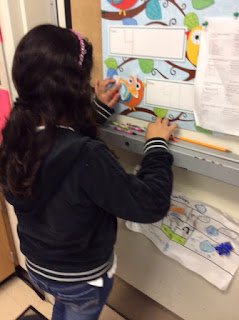Returning back to school can bring forth so many mixed emotions. There's the anxiousness and the overwhelming feeling of having so much to do. There's the excitement of meeting your new class and decorating your classroom. There's the nervousness of the unknown and wondering how your students will behave and abide by your rules and procedures. Instead of worrying about behavior, you can incorporate your class rules and procedures into the "Back to School Depth and Complexity Frames Freebie!" This freebie is part of two of my other packs.
Here's What's Included in the Freebie:
Box 1--Rules
In the top portion, your students will need to think about some of the rules they think should be established in your class (you could also add in procedures if you'd like). This gives the kids buy-in because they're actually part of the process. In the future, you could even remind them about their part in the process. "Danny, remember we decided to listen while the teacher is speaking?" Ha ha!
The freebie includes two frames which have the same prompts of Depth and Complexity, but one of the frames is embedded with cooperative learning structures. It's up to you to choose whether or not you'd like to use the structures during this activity. I truly prefer to use these cooperative learning structures because the kids get to work together and verbalize their ideas.
If you do use this embedded frame, the students would start off in a Round Robin fashion, which means all students would take turns answering the prompt one at a time, and then writing their answers down. These directions are also included in the packet.
Box 2--Language of the Discipline
In the next section of the frame, students would need to think about language both a teacher and student may need to use in the classroom (lips icon). You can be creative on this part. Maybe they're listing words like "please" and "thank you" or maybe these are words having to do with curriculum. Whatever you do, discuss each prompt with the children first because as you know, sometimes they come to be a little lost when we don't explain things to them! Using the embedded frame would instruct the kids to work with a partner in a Rally Robin ping pong fashion, in which they'd list their answers by sharing back and forth, back and forth and writing down answers after each partner takes a turn.
Box 3--Details
For the next part, I like to have students jump directly across to the details icon (flower). Now students need to write down details that their teacher should know about them. This information can be really helpful because we all need to get to know our students! On the embedded cooperative learning frame, this can be performed using a Give One Get One fashion or a Mix-Pair-Share. If you feel like this may be too personal for students to share, you could have students use these structures during the bottom portion instead.
Box 4--Multiple Perspectives
Finally, students work in the bottom section of the frame to think about multiple perspectives (glasses icon). They'll need to write about what both a teacher and student need to do to make the classroom a great place to be. I think this may be one of the most important questions of all because it takes every person in the room to make the classroom special. We want our students to feel safe when they come to our classrooms and also to want to be there too. If using the embedded frame, this box can be done independently, or you could have kids work with a group or partner.
Task Cards
This freebie also comes with two sets of task cards which match the prompts from the frame. Suggestions for how to use these cards are also included in the "Suggestions for Use" page.
Here's the link:
https://www.teacherspayteachers.com/Product/Back-to-School-Depth-and-Complexity-Frames-Freebie-2646559
I hope you like it! In my other packs, I offer two more frames (and two more embedded frames) which also feature some of the Content Imperatives and the new prompts of Depth and Complexity. Additionally, you'll receive many activities such as:
- Create and write about your dream classroom and teacher (something I do every year the first week of school)
- A note taking page on rules and procedures
- Task cards for all frames
- A class building activity featuring Mix-Pair-Share
- A design your own Depth and Complexity t-shirt page
- A chart featuring the icons and imperatives with their meanings
- A game about the icons where students need to match different prompts and scenarios to the icons
- A board game (in black and white or color)
- A two page questionnaire/inventory to get to know your students better (questions about home life and educational needs are included)
- Goal setting pages
- A page to assist students with planning a presentation on a particular rule or procedure for your classroom
Here's the link if you'd like to check it out:
https://www.teacherspayteachers.com/Product/Back-to-School-Depth-and-Complexity-Frames-Games-and-Activities-Pack-2645396
Enjoy, and thanks for visiting! Let me know what you think by commenting below or on Teachers Pay Teachers. Please feel free to also ask any questions! I'm always happy to hear from you!






























































